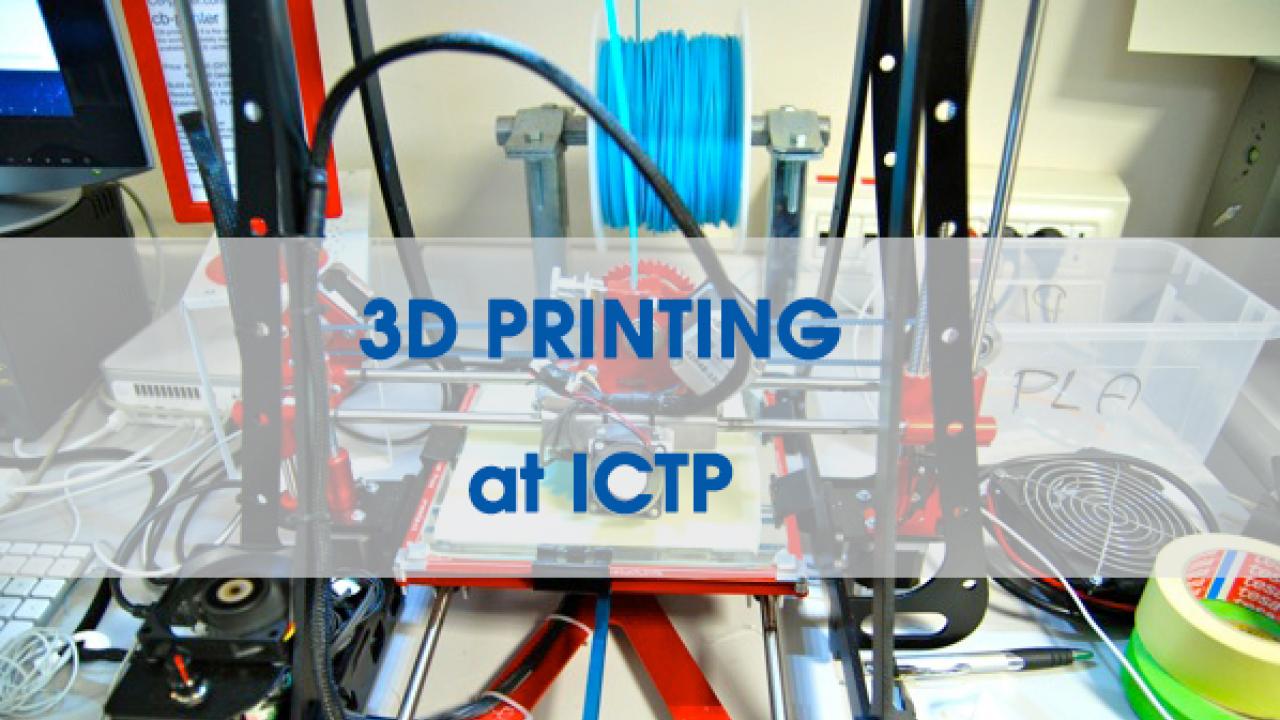
ICTP is exploring how to harness the endless possibilities of 3D
printing for science, education and sustainable development. Its
Science Dissemination Unit (SDU), which has a long history of
introducing low-cost technologies to scientists in the developing
world, recently organized ICTP's first International Workshop on
Low-Cost 3D Printing for Science, Education and Sustainable
Development (6 to 8 May 2013).
The workshop gave a glimpse of the many possibilities the
technology provides to science, education and sustainable
development. Lecturers included William Hoyle, chief executive of
techfortrade, a non-profit organization established in 2011 to
support innovation in emerging technologies that facilitate trade
and alleviate poverty in the world's poorest communities. Inspired
by the glowing media reports on 3D printing, Hoyle thought the
technology could be promoted by his organization. "I was wondering,
what could 3D printing do for the developing world?" he said.
To answer that question, techfortrade launched the 3D4D
competition in 2012, inviting ideas from around the world for 3D
printing projects that would benefit society and have a sustainable
business plan. They received 78 entries vying for the $100,000
prize. The Washington Open Object Fabricators (WOOF), whose project
recycles waste plastic into filament for 3D printers to create new
products, submitted the winning entry. WOOF's proposal included a
plan to work with the non-governmental organization Water for
Humans to address water and sanitation issues in Oaxaca,
Mexico.
Gregor Luetolf of the University of Teacher Education in Bern,
Switzerland, trains teachers in new technologies. His presentation
at the ICTP workshop highlighted the many 3D printing applications
in education, including the designing and printing of musical
instruments, the production of reliefs for geography lessons, and
the creation of molecular models for science studies. The use of 3D
printing can be invaluable in geometry classes, he said, where
students often have difficulties visualizing objects presented to
them in a textbook. "If the students can design the geometric
object and then 3D print it and take it in their hands and really
hold it, they will have a better understanding of the dimensions of
the object," he explained.
Three-dimensional printing is also making its mark in the world of
palaeontology, where not only the printing itself but also the
scanning necessary to create digital models to be printed is being
used in creative ways to reach out to the general public.
Louise Leakey, a palaeontologist who concentrates her work in the
Turkana Basin area of Kenya, curates a virtual museum of African
fossils. At the ICTP workshop, she described how she uses a
technique called photogrammetry to photograph fossil specimens from
all angles; the photographs are then transformed into 3D images. At
the museum's website, www.africanfossils.org, users
can explore a number of hominid fossils and other specimen
collected from the Turkana Basin; a user-friendly interface allows
users to rotate fossils and view them from any angle. "This
interaction is getting people to think about our past again, and
that is exciting," Leakey said. She plans to make available
low-resolution files of some of these digital models on her website
so that users can print them on home 3D printers. For those who do
not have such printers, Leakey has designed a series of templates,
based on the digital models, that can be traced onto and cut out of
corrugated cardboard and then assembled, layer by layer, forming a
cardboard reconstruction of a fossil.
ICTP's workshop presented a range of 3D printing possibilities
that most of the participants and lecturers could never have
imagined before, and reinforced the notion of an open community
whose members are supporting each other with a fledgling technology
that is ready to take the world by storm. As with all of ICTP's
activities, the workshop brought international scientists together
and allowed them to create networks. Workshop participant Rodrigo
Marques, a chemistry professor at the State University of São Paulo
(UNESP), Brazil, connected with a fellow Brazilian attendee over
their shared interest in using 3D printers to construct bones; the
two hope to organize a 3D printing workshop in Brazil.
Those at the workshop expressed pleasant surprise at the wide
range of fields represented at the event, as well as the strong
camaraderie that developed during the 3 days between participants
and lecturers. "The atmosphere of the workshop was wonderfully
open," reflected participant Franco Policardi of the University of
Ljubljana, adding, "3D printing is like a multifunctional
algorithm, where there are a lot of different structures that have
to be implemented. The technology allows us to put all these small
parts of knowledge and technology together to create new things."
He predicted that 3D printing is poised to be around for a while:
"I do not think it passes one or two seconds after its Big Bang--we
are exactly at the beginning."
















